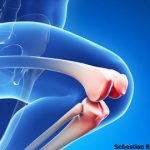Greater progression and better outcomes for both procedures are based on underlying pathology, the surgeon’s technique and patients’ tolerance for exercise, Gall summarized. “All good rehab programs depend on communication between the surgeon, inpatient nursing staff, and all of the therapists.” While it is the surgeon’s responsibility to discuss outcome and expectations with patients well before surgery, she said, “it’s really important to integrate pre-op, intra-op, and post-op factors into the rehab progression.”
Gretchen Henkel is a medical journalist based in California.


